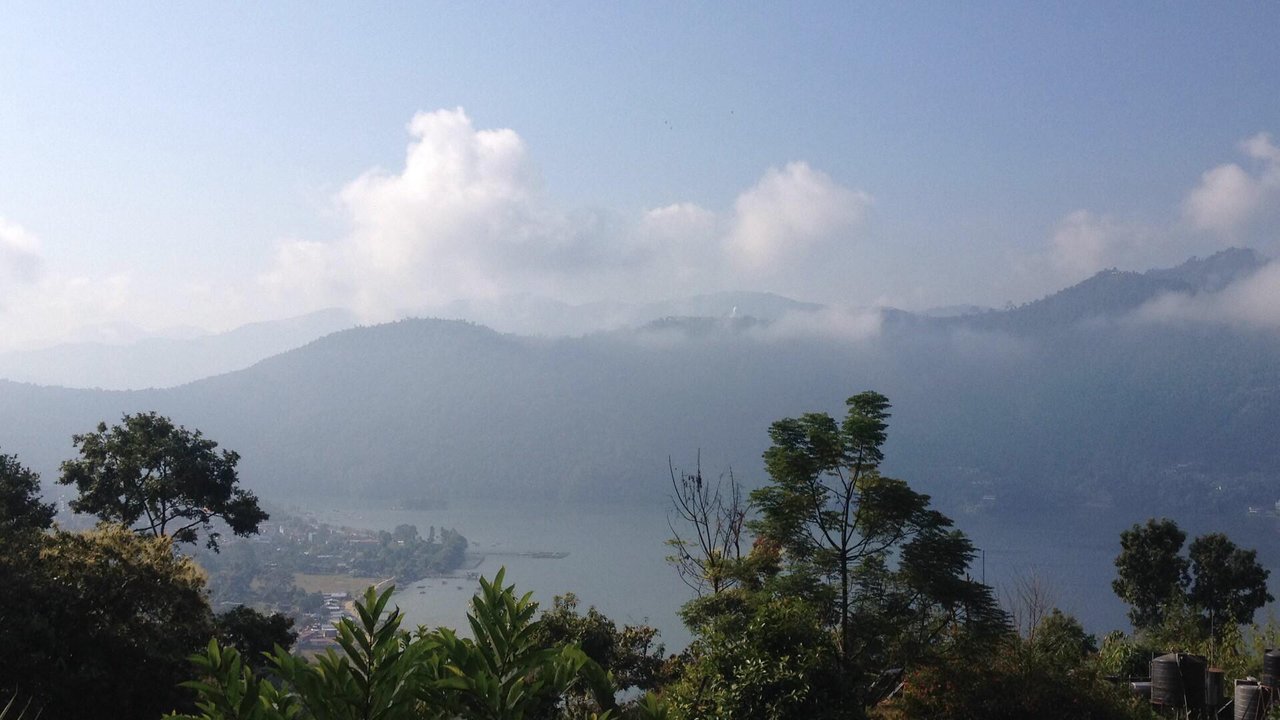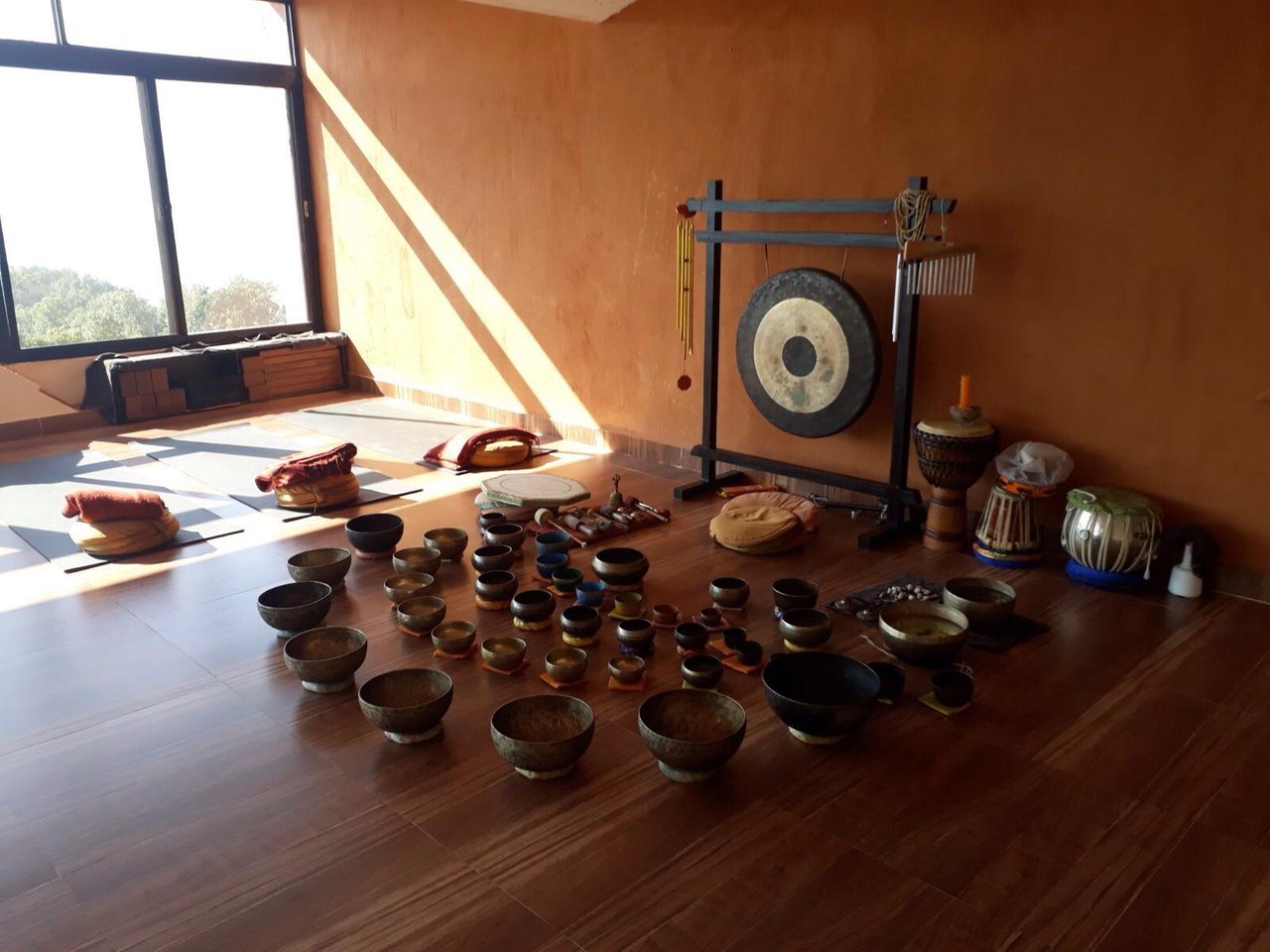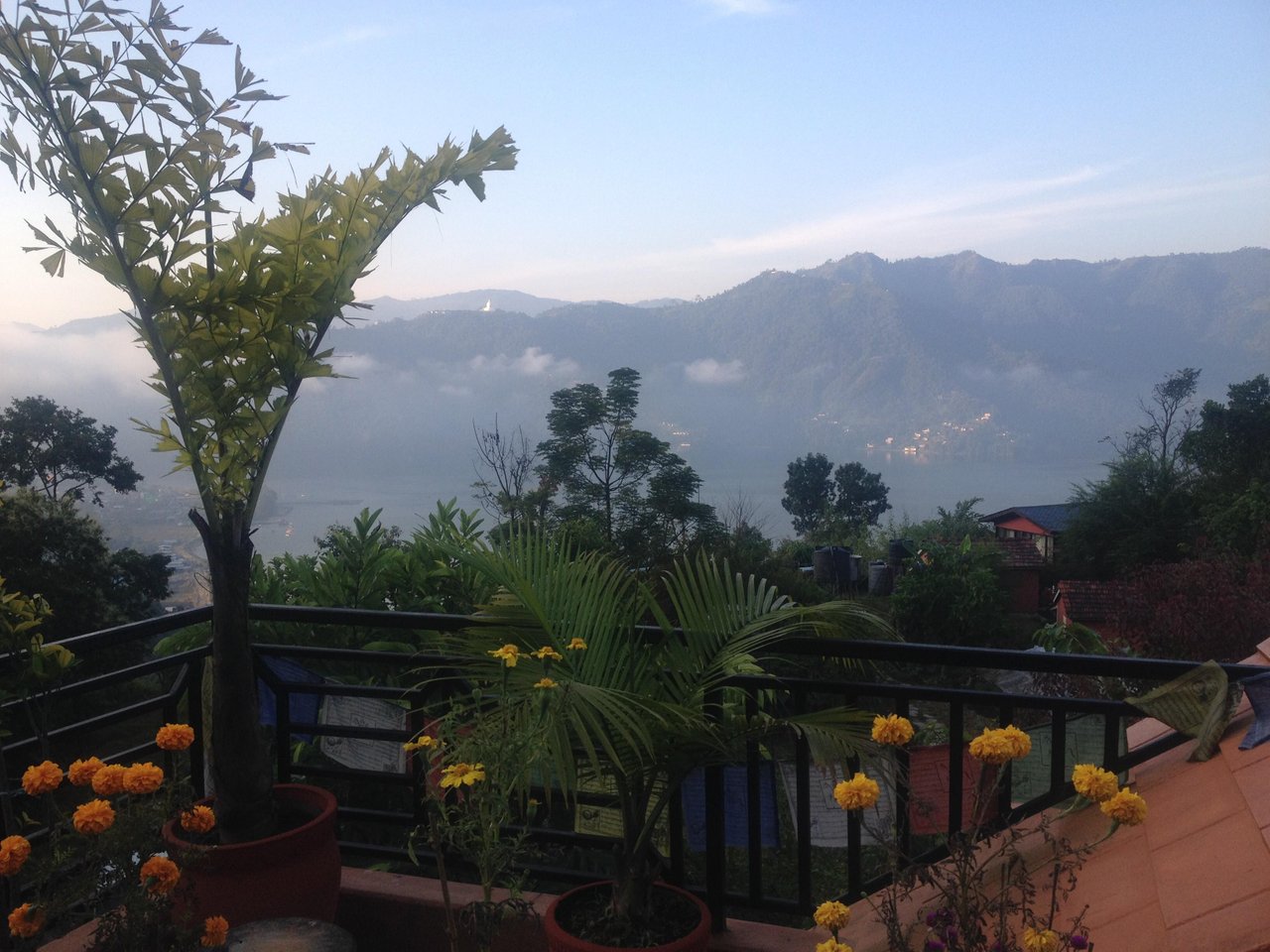The bus ride from Kathmandu to Pokhara is seven long, dusty and bumpy hours. My friend and I were tired and frazzled by the time we clambered down the steps of the bus into the waiting throng of hotel touts and taxi drivers. Peering for a sign with our names on it, we threaded our way through the crowd until, emerging suddenly into open space we were greeted by the gently smiling face of one of our hosts for the next few days.
Purna Yoga Retreat is situated in the hills above Pokhara, Nepal. With our rucksacks bundled into the back of the ancient jeep we jolted and bounced our way up a steep rutted track. Climbing the final steps on foot, we emerged into a peaceful sunny garden. Ranged on a series of terraces overlooking the lake below were the red stone buildings comprising accommodation, yoga and meditation hall, dining hall and kitchens in which the guests and staff traced out their daily routine.

Surrendering to routine
Over the next few days we would merge seamlessly into that routine, waking at 6am to the sound of singing bowls played by the staff outside our doors, to begin the morning meditation and relaxation session followed by the first of the twice daily hour and a half yoga sessions. A welcome and delicious breakfast of muesli or porridge and fruit was followed by wellness activities. These included steam immersion, Himalayan salt foot baths and mud baths.

A session of a sound immersion was followed by lunch and a couple of hours free time. We came together again for chanting and the second of the daily yoga sessions. Dinner was followed by candlelight meditation and then bed at 9pm. A gong sounds to alert guests that the next activity is about to start. This routine flows through the centre every day of the year and all newcomers have to do is surrender to its rhythm. Submerged in this routine we drifted through each day effortlessly from dawn to dusk.
Over a delicious vegetarian dinner that first evening, we met fellow guests, some of whom were coming to the end of their stay, others like us who had just arrived, and yet others who were midway through a longer stay, in one case of three months. They were a mix of men and women, ages from early 20s to around late 50s, some couples, some travelling with a friend, and others alone. Mostly from the US, Europe and Australia, there was also an Indian woman and an Iranian woman.

Learning to be still
Mealtimes also provided the opportunity to talk with some of the gurus running the centre, all of whom were from Nepal. Mahesh ran the morning meditation and yoga session. He would sit motionless cross-legged on the mat waiting for us, swathed in an orange blanket, his stillness silencing us as we entered the room, breathless from the race from bed to yoga mat.
Mahesh’s classes tended towards static yoga rather than the more dynamic yoga I was used to. The difference is that rather than flowing through poses one to the other, we were encouraged to hold them, to draw the mind inwards to the body, and to really experience how the pose makes the body feel. I came to enjoy these classes immensely, starting to understand how the lengthy duration of the poses gave space for conscious control of the mind over the body. Although we went through far fewer poses than I would in another class, I came away with a far greater feeling of having achieved something simply for having gone through the class with greater awareness. Sometimes less really is more.
Mahesh was a gentle presence, guiding us firmly through the poses with a relaxed yet purposive demeanour. Over lunch one day he told us that he meditates daily for up to four hours in total. In his softly spoken and deliberate manner he explained how he had gradually built up his daily meditation over the course of many years. He was a fantastic advert for meditation, a calm and patient presence who seemed utterly contented with his life.
Immersed in sound
Of all the activities we engaged in at the retreat my favourite, and the favourite of many of the guests, was the sound immersion. This was like nothing I had ever experienced before. It was held in the yoga hall, where the guru had arranged a series of singing bowls, gongs, trays filled with water and sand, and wind chimes.

We all lay down on our backs, covered ourselves with the orange blankets provided, closed our eyes and let the guru take us on a journey of sound. As I lay there under my blanket, feeling the warm sun falling through the windows onto my limbs, my mind took me to a river bank in a sunny meadow filled with flowers and butterflies. It was utterly peaceful. I was in a place between waking and sleeping being led onwards effortlessly by the sounds conjured up by the guru. The half hour immersion always ended too soon. I would emerge from my trance-like state like a butterfly from a cocoon, relaxed, energised and blinking in amazement at the world.
Meditation for beginners
Meditation proved harder. Candlelight meditation was half an hour of sitting cross-legged and straight-backed, staring at a candle flame for as long as possible without blinking, without moving. The first time I tried this my leg cramped and I spent most of the half hour trying to move surreptitiously to release the cramp, obviously completely distracted from the candle flame.
On the second evening I therefore made sure that I was in as comfortable a position as possible before beginning the meditation. From this starting point I stared at the flame until the surrounding world went dark and the flame took over my whole field of vision, sucking me in. My eyes started to fill with tears as I stared fixedly without blinking. It was incredible how much the flame drew me in pulling my thoughts with it until my mind was empty of everything but that orange flickering light.
I got frustrated however because my mind would keep wandering. Over lunch I spoke to Mahesh about how he manages to maintain utter focus. He smiled and said his mind wanders too. The most important thing, he said, was that when your mind wanders you must not follow those thoughts. You must let them come, you cannot prevent them coming, he said, but do not follow them. Instead let them come and then immediately let them go and bring your mind back to focus.

Let the thoughts come
The final night, gazing at the candle, I took Mahesh’s words to heart, and as my thoughts wandered away again and again I drew my mind back in to the flame. Time and again my mind wandered and time and again I drew it back to the flame. Over the course of this half hour I came to realise that this very process of drawing the mind back to focus is itself meditation. That in exercising that level of control over your thoughts you are refusing to let yourself be led by them and in refusing to be led by them you are on the way to achieving concentration of mind.
I left Purna Yoga Retreat with renewed energy and mental strength. It is a beautiful place both for the location and the staff. The lessons I took away with me are that making time to do a few things well is more important than trying to rush through as many as possible, and that in pursuit of a goal the most important thing is not to get put off or frustrated by obstacles, to accept that they will arise, and to keep pulling yourself time and again back onto the path.
All photos by freewheel
